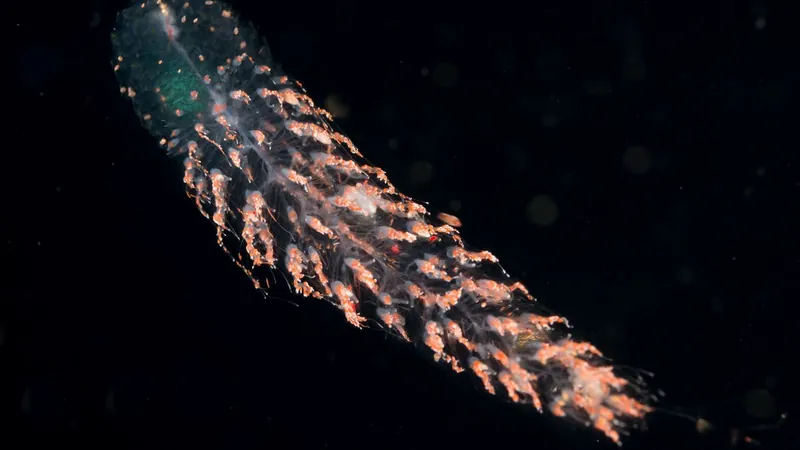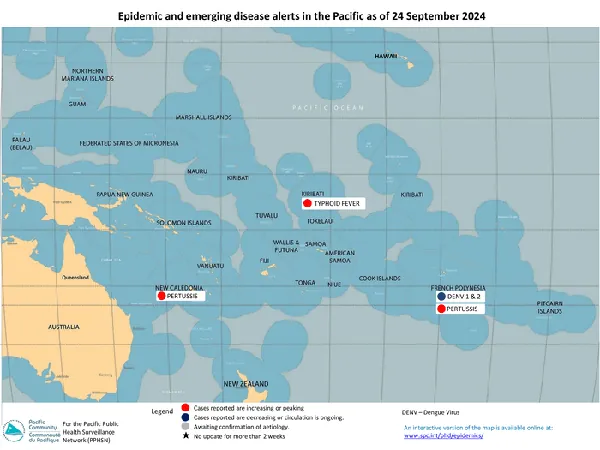
Siphonophores: The Incredible Clonal Colonies That Tower Over Blue Whales
2024-09-28
Siphonophores: The Incredible Clonal Colonies That Tower Over Blue Whales
Siphonophores are among the ocean’s most fascinating creatures, and they might just have the blue whale beat in terms of length. These astounding organisms can grow to over 150 feet (46 meters) long, making them some of the longest living beings on the planet.
Habitat
Siphonophores can be found in all the world's oceans, from the deep sea to the surface waters. Their adaptation to various marine environments showcases their ecological resilience.
Diet
Their diet consists primarily of small crustaceans, copepods, and fish, which they capture using specialized structures.
Why They’re Extraordinary
While the blue whale reigns as the largest animal, siphonophores are unique not just for their size, but for their remarkable biology. There are around 175 different species of these creatures, each with specialized adaptations. For example, the notorious Portuguese man o'war is a famous siphonophore that resembles a jellyfish, showcasing the diversity within this category.
One of the most interesting aspects of siphonophores is that what appears to be a single organism is actually a colony of genetically identical individuals known as “zooids.” Each zooid has a distinct role—some are dedicated to feeding while others manage reproduction or movement. This specialized system means that the zooids depend on one another for survival, emphasizing the power of collaboration in the natural world.
An individual siphonophore originates from a single zooid that hatches from a fertilized egg. This initial zooid then develops growth zones that enable asexual reproduction, allowing the colony to expand perpetually over time.
Hunting Mechanisms
When it comes to hunting, siphonophores are equipped with venomous tentacles that can immobilize their prey. A notable example of this hunting method was observed by marine biologists in western Australia in 2020, where a massive 150-foot giant siphonophore (Praya dubia) was seen engaging in a "doom spiral," a predatory tactic that ensnares unsuspecting fish and crustaceans.
Bioluminescence
Moreover, many siphonophores are bioluminescent, which means they can produce light through a chemical reaction. This ability not only helps siphonophores attract prey but also serves as a fascinating spectacle in the dark depths of the ocean. The majority emit green or blue light, as these wavelengths travel farther underwater. However, the genus Erenna made headlines as the first known marine invertebrate to emit red bioluminescence, a rare occurrence due to the unique optical conditions of the ocean.
A 2005 study by marine biologist Steven Haddock revealed that this red glow may play a crucial role in attracting fish, as they may confuse it with the bioluminescence produced by algae found in the stomachs of their prey, like copepods.
Conclusion
In summary, siphonophores embody unique adaptations and an unparalleled life strategy that showcases the wonders of marine biodiversity. Their astonishing size, collaborative biology, and incredible feeding mechanisms make them a true marvel of the ocean. Who knew that the ocean harbored creatures longer than a blue whale and filled with such surprises? Discover more about these enigmatic beings and explore the mysteries of our planet’s oceans!




 Brasil (PT)
Brasil (PT)
 Canada (EN)
Canada (EN)
 Chile (ES)
Chile (ES)
 España (ES)
España (ES)
 France (FR)
France (FR)
 Hong Kong (EN)
Hong Kong (EN)
 Italia (IT)
Italia (IT)
 日本 (JA)
日本 (JA)
 Magyarország (HU)
Magyarország (HU)
 Norge (NO)
Norge (NO)
 Polska (PL)
Polska (PL)
 Schweiz (DE)
Schweiz (DE)
 Singapore (EN)
Singapore (EN)
 Sverige (SV)
Sverige (SV)
 Suomi (FI)
Suomi (FI)
 Türkiye (TR)
Türkiye (TR)